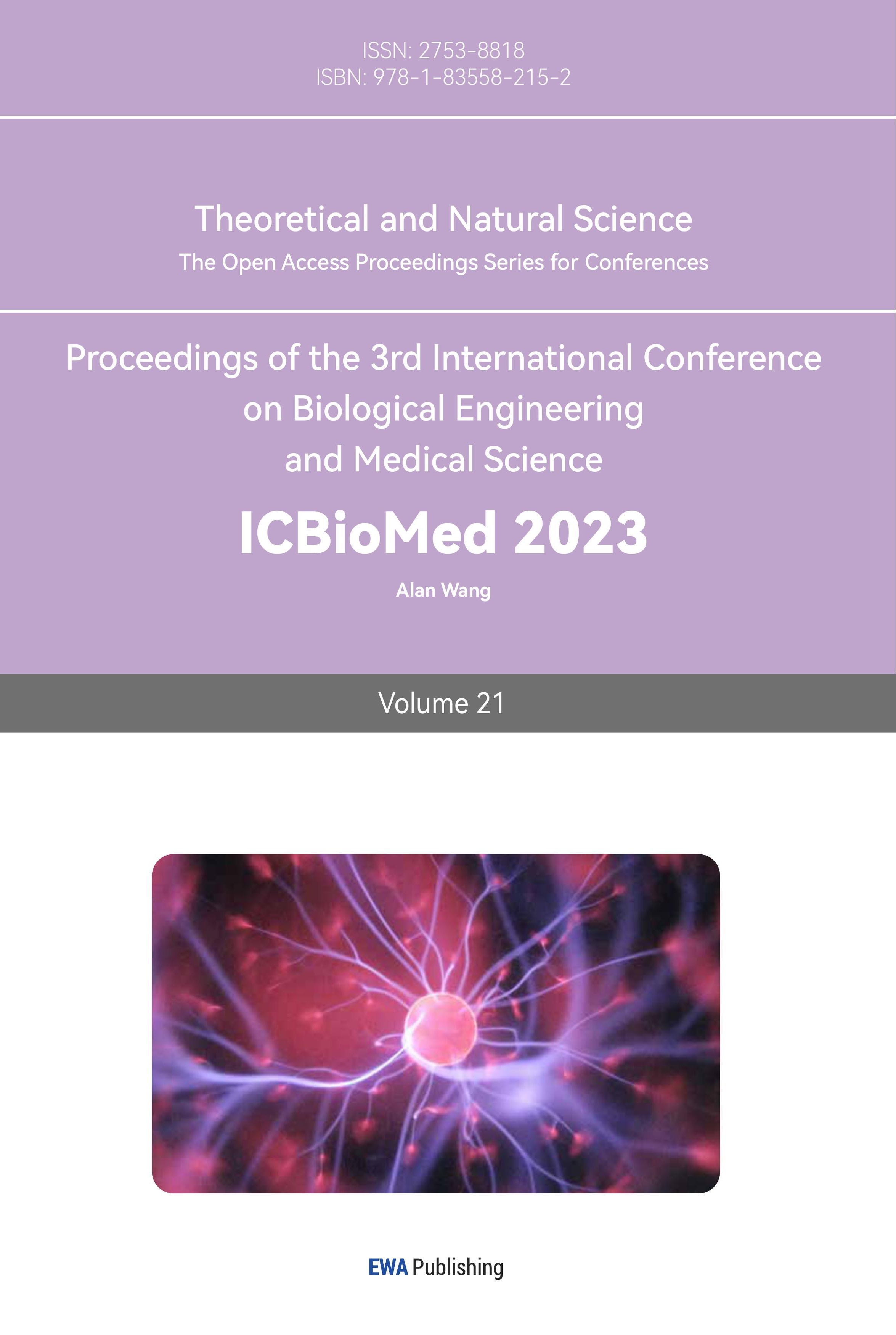References
[1]. Vucinic, V., Quaiser, A., Lückemeier, P., Fricke, S., Platzbecker, U. and Koehl, U., “Production and Application of CAR T Cells: Current and Future Role of Europe,” Frontiers in Medicine 8, 713401 (2021).
[2]. Shah, N. N. and Fry, T. J., “Mechanisms of resistance to CAR T cell therapy,” Nature Reviews Clinical Oncology 16(6), 372–385 (2019).
[3]. Neelapu, S. S., “Managing the toxicities of CAR T‐cell therapy,” Hematological Oncology 37(S1), 48–52 (2019).
[4]. Hao, Z., Li, R., Meng, L., Han, Z. and Hong, Z., “Macrophage, the potential key mediator in CAR-T related CRS,” Experimental Hematology & Oncology 9(1), 15 (2020).
[5]. Adachi, K., Kano, Y., Nagai, T., Okuyama, N., Sakoda, Y. and Tamada, K., “IL-7 and CCL19 expression in CAR-T cells improves immune cell infiltration and CAR-T cell survival in the tumor,” Nature Biotechnology 36(4), 346–351 (2018).
[6]. Wang, M., Zhang, C. and Jiang, X., “CAR-T: a potential gene carrier targeting solid tumor immune microenvironment,” Signal Transduction and Targeted Therapy 6(1) (2021).
[7]. Li, Y., Huo, Y., Yu, L. and Wang, J., “Quality Control and Nonclinical Research on CAR-T Cell Products: General Principles and Key Issues,” Engineering 5(1), 122–131 (2019).
[8]. Li, H., Yang, C., Cheng, H., Huang, S. and Zheng, Y., “CAR-T cells for Colorectal Cancer: Target-selection and strategies for improved activity and safety,” Journal of Cancer 12(6), 1804–1814 (2021).
[9]. Glover, M., Avraamides, S. and Maher, J., “How Can We Engineer CAR T Cells to Overcome Resistance?” Biologics: Targets and Therapy 15, 175–198 (2021).
[10]. Sermer, D. and Brentjens, R., “CAR T‐cell therapy: Full speed ahead,” Hematological Oncology 37(S1), 95–100 (2019).
Cite this article
Lin,X. (2023). Limitations of CAR-T therapy and possible directions of improvement. Theoretical and Natural Science,21,279-283.
Data availability
The datasets used and/or analyzed during the current study will be available from the authors upon reasonable request.
Disclaimer/Publisher's Note
The statements, opinions and data contained in all publications are solely those of the individual author(s) and contributor(s) and not of EWA Publishing and/or the editor(s). EWA Publishing and/or the editor(s) disclaim responsibility for any injury to people or property resulting from any ideas, methods, instructions or products referred to in the content.
About volume
Volume title: Proceedings of the 3rd International Conference on Biological Engineering and Medical Science
© 2024 by the author(s). Licensee EWA Publishing, Oxford, UK. This article is an open access article distributed under the terms and
conditions of the Creative Commons Attribution (CC BY) license. Authors who
publish this series agree to the following terms:
1. Authors retain copyright and grant the series right of first publication with the work simultaneously licensed under a Creative Commons
Attribution License that allows others to share the work with an acknowledgment of the work's authorship and initial publication in this
series.
2. Authors are able to enter into separate, additional contractual arrangements for the non-exclusive distribution of the series's published
version of the work (e.g., post it to an institutional repository or publish it in a book), with an acknowledgment of its initial
publication in this series.
3. Authors are permitted and encouraged to post their work online (e.g., in institutional repositories or on their website) prior to and
during the submission process, as it can lead to productive exchanges, as well as earlier and greater citation of published work (See
Open access policy for details).
References
[1]. Vucinic, V., Quaiser, A., Lückemeier, P., Fricke, S., Platzbecker, U. and Koehl, U., “Production and Application of CAR T Cells: Current and Future Role of Europe,” Frontiers in Medicine 8, 713401 (2021).
[2]. Shah, N. N. and Fry, T. J., “Mechanisms of resistance to CAR T cell therapy,” Nature Reviews Clinical Oncology 16(6), 372–385 (2019).
[3]. Neelapu, S. S., “Managing the toxicities of CAR T‐cell therapy,” Hematological Oncology 37(S1), 48–52 (2019).
[4]. Hao, Z., Li, R., Meng, L., Han, Z. and Hong, Z., “Macrophage, the potential key mediator in CAR-T related CRS,” Experimental Hematology & Oncology 9(1), 15 (2020).
[5]. Adachi, K., Kano, Y., Nagai, T., Okuyama, N., Sakoda, Y. and Tamada, K., “IL-7 and CCL19 expression in CAR-T cells improves immune cell infiltration and CAR-T cell survival in the tumor,” Nature Biotechnology 36(4), 346–351 (2018).
[6]. Wang, M., Zhang, C. and Jiang, X., “CAR-T: a potential gene carrier targeting solid tumor immune microenvironment,” Signal Transduction and Targeted Therapy 6(1) (2021).
[7]. Li, Y., Huo, Y., Yu, L. and Wang, J., “Quality Control and Nonclinical Research on CAR-T Cell Products: General Principles and Key Issues,” Engineering 5(1), 122–131 (2019).
[8]. Li, H., Yang, C., Cheng, H., Huang, S. and Zheng, Y., “CAR-T cells for Colorectal Cancer: Target-selection and strategies for improved activity and safety,” Journal of Cancer 12(6), 1804–1814 (2021).
[9]. Glover, M., Avraamides, S. and Maher, J., “How Can We Engineer CAR T Cells to Overcome Resistance?” Biologics: Targets and Therapy 15, 175–198 (2021).
[10]. Sermer, D. and Brentjens, R., “CAR T‐cell therapy: Full speed ahead,” Hematological Oncology 37(S1), 95–100 (2019).









